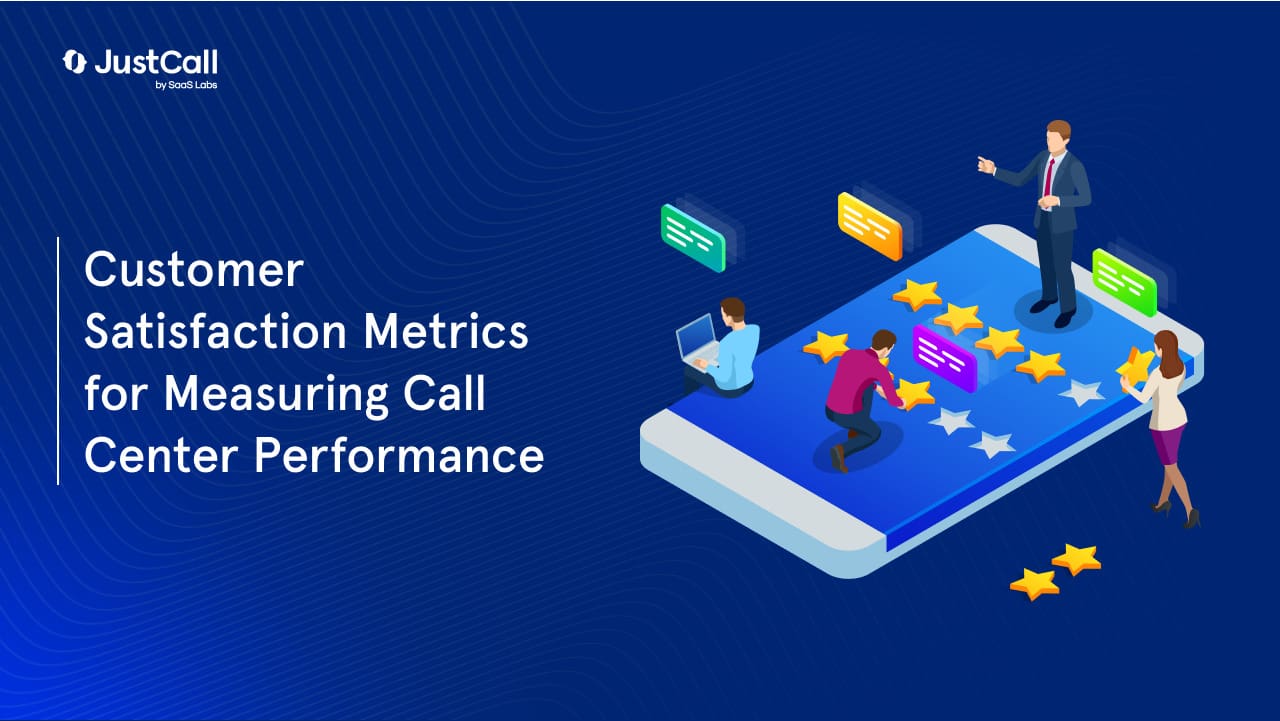When it comes to customer service, there is little to no room for trial and error. About seven out of ten customers have stopped doing business with a brand because of a single negative customer service experience.
As such, performance tracking and measurement become mandatory to ensure that customer service delivery meets organizational standards and values. At the same time, it can highlight areas of improvement in your GTM teams and agents.
However, such an endeavor can only bear fruit through qualitative and quantitative performance measuring and tracking. In other words, you need the right set of metrics.
Well, we’ve got you covered.
Key Metrics for Real-Time Reporting and Insights
As mentioned, you need the right set of metrics to measure your agent or team’s performance. Most customer support analytics will fall under the following categories:
Speed Metrics
90% of customers appreciate an “immediate” response after a customer service or support query. This “immediate” could be as little as 10 minutes, which means no ticketing system or 24-hour reply windows. Businesses need to act promptly.
Here are the metrics that will come into play while measuring immediacy:
- Queuing Wait Times: It is the amount of time a customer spends waiting in a queue or on hold before they are served. 43% of customers find long call hold times frustrating, and that’s why reducing it considerably improves the experience.
- First Response Time (FRT): It is a measure of time from the moment a customer submits their query until an agent responds to it. Try to clock an FRT that’s less than three minutes, which is the industry benchmark.
- Response Times: It is the average time between each response. You can find it by totaling the response times with the number of responses.
- Average Handling Time (AHT): Often used to measure service calls, AHT is the average length of the customer call to resolve a request. Six minutes and ten seconds is the industry benchmark for AHT.
Customers are more inclined to repurchase from you if they have a positive experience with your customer care and support employees. A quick response time plays a key role in a positive experience and, thus, boosts company revenue.
Accuracy Metrics
While time is of the essence, the quality of resolution is equally crucial in determining the customer experience. After all, about 42% of consumers consider the accuracy of information and resolution to be of extreme importance – superseding even speed and efficiency! In simpler words, quality triumphs quantity.
So, here are a few metrics to measure resolution accuracy:
- Customer Success Ratio (CSR): It is the ratio of the number of resolutions marked as satisfactory by the customer versus the total number of resolutions. You want this ratio to be as close to one as possible.
- First Contact Resolution Rate (FCRR): It measures the number of customer contacts resolved in the very first interaction. The FCRR benchmark average is 71%, which means that about 3 out of 10 consumers have to call back to obtain a resolution for their query.
- Ticket Reopens: Frequent “ticket reopens” indicate poor or unsatisfactory resolution. By this definition, it is easier to find a close link between CSR and ticket reopens as the latter indicates dissatisfaction against a closed query.
Efficiency Metrics
Any talks about performance tracking and measurement would be incomplete without efficiency metrics. Your customer service agent’s efficiency is directly proportional to your business’s profitability.
For instance, when Tesco, a retail company, focused on improving its customer service efficiency metrics, it also witnessed cost savings, better resource utilization, and manageable workloads.
Here’s what you need to track:
- Average touchpoints before Resolution: It measures the number of times the customer has had to connect with your company over different platforms before resolution. This includes email, social media, chatbot, calls, etc.
- Handovers per issue: Frequent handovers within the team or across departments indicate a skill or procedural issue that is posing a roadblock in the way of customer success. It could also also indicate a fault in your telephony network hierarchy.
- Average Occupancy Rate: The average time a service rep spends per customer interaction versus after-call work (ACW) or idle times. The industry average occupancy rate is 83.3%, which means that customer service agents spend about 50 minutes serving a customer and 10 minutes on off-call tasks.
Customer Relationship Metrics
Also known as customer satisfaction metrics, these post-service tools are used to gauge the customer experience. After all, 62% of customers will share unpleasant or bad experiences with others, thereby triggering an avalanche of negative press.
To avoid such a situation, common metrics to measure customer relationships include:
- Customer Satisfaction (CSAT) Score: Often used almost instantly, this metric collects customer experience in Yes/No or 5–star rating format. You can use it to measure parameters like helpfulness, effectiveness, friendliness, etc., of the agent.
- Customer Effort Score (CES): It uses a scale gradient to measure the amount of effort it took for the customer to reach a resolution for their problem. Apart from measuring success, it is also a metric of customer support accessibility.
- Net Promoter Score (NPS): It measures the likelihood of the customer referring your brand to friends or family. Rather than measuring emotion, it captures the intention.
Guide to Performance Tracking and Measurement for Best Results
Now that you have a better understanding of the different metrics, let’s apply that to develop an actionable strategy for improving business processes:
Identify the Key Metrics
It may be clear by now that you have a plethora of performance tracking and measurement metrics to choose from. Each of these measures different entities like speed, accuracy, efficiency, and impact.
Depending on the state and performance of your customer service team, identify the key metrics that you wish to measure. For instance, if you notice a decline in service quality, then you can start measuring accuracy metrics – and so on.
Establish Benchmarks
You can’t expect your customer service teams to dial from 10 to 100. For realistic growth, review past performance to establish benchmarks and introduce incremental goals. Such a strategy will put your team on a sustainable growth trajectory.
If you do not possess sufficient data to benchmark on the basis of past performance, then you can use industry standards (some of which we’ve shared above) as a marker to get started.
Track and Monitor
Once you have the metrics, the benchmarks, and projected values, track and monitor the changes. You want to close the expectations vs. reality gap. For real-time reporting and insights, trust a powerful tool like JustCall to gain a single dashboard view of your entire organization. JustCall offers complete flexibility in defining your preferred metrics and their corresponding values.
Provide Coaching & Mentorship
If you have a robust customer support analytics tool, it will grant you an overview of customer service performance at the team and individual levels. Based on such feedback, you can curate personalized coaching and mentorship programs for the reps to improve continuously.
JustCall can make light of this work by analyzing every call for every agent. Managers can then use such scorecards to understand pain points, knowledge or skill gaps, and strong areas to improve the agent’s performance.
Optimize Processes
With time, certain metrics will no longer stay relevant, while others will gain greater importance. For example, speed may have been an issue when your business was expanding at an accelerated rate and handling high volumes of customer queries. But now that you’re established, you would want to focus on delivering accuracy.
As such, review your performance tracking and measurement metrics from time to time. While you’re at it, you can also capture feedback from your customer service teams on how to strengthen and improve processes.
Get Smarter With Smart Metrics
While the above metrics and the resulting performance evaluation process can lend direction to businesses, customer support analytics is far more nuanced and multifaceted to follow a “one size fits all” approach.
What you need is a performance tracking and measurement tool that can perform such a function at a granular level and roll out personalized skill enhancement programs. Fortunately, help is right at hand. JustCall is your one-stop tool for measuring performance using the right set of metrics. All you need is to tweak the variables to your business requirements.
Once you measure performance in such a manner, you will notice a marked improvement in customer service and support processes!












